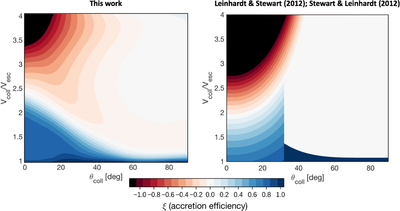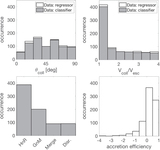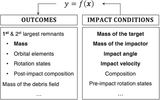Image Details

Caption: Figure 6.
Left-hand panel: map of accretion efficiency—Equation (11)—as predicted by the neural network (Section 3.2). Right-hand panel: map of collision outcome and accretion efficiency generated using the scaling laws proposed by Leinhardt & Stewart (2012), for the same combination of mass of the target and mass of the projectile, using the values c⋆ = 1.9 and ﹩\bar{\mu }=0.36﹩, which were fit to hydrodynamic planets. Impact velocity (y axis) ranges between 1 to 4 vesc, impact angle (x axis) ranges from head-on to grazing, MT = 0.1 M⊕, and γ = MP/MT = 0.7. The grid was sampled in steps of 0.°01 and 0.01vesc; the color for each mesh face is dictated by the vertex with the smallest index. Accretion efficiency shows a rich range of outcomes, which includes transitions from accretion (cooler colors) to disruption (warmer/black colors), to hit-and-run (almost net-zero accretion; white colors).
Copyright and Terms & Conditions
© 2019. The American Astronomical Society. All rights reserved.









